Customer Segmentation Models and Tools to Drive Growth
In an increasingly competitive market environment, businesses must go above and beyond to attract and retain customers. This requires delivering personalized interactions, customized product offerings, and tailored customer experiences that distinguish your brand from the competition.
Customer segmentation is a key to achieving this level of customization, and you may already be familiar with the concept. But what is the true value of segmenting customers, and which model should your business adopt?
In this article, we will explore the benefits of customer segmentation and compare five powerful models to help you choose the best approach for your specific needs.

What is Customer Segmentation?
Customer segmentation can be defined as the process of dividing a large number of customers into smaller subgroups based on specific characteristics, such as demographics, behaviors, or needs.
This process enables businesses to gain deeper insights into their customer base, which helps them target specific groups or craft personalized experiences through focused marketing efforts.
Segmentation can be applied across various industries, for example:
- A clothing brand might segment customers based on age, gender, income level, and fashion preferences.
- A financial services provider could segment customers based on their financial goals, risk tolerance, and investment history.
- A healthcare provider may segment patients based on their medical conditions, treatment history, and lifestyle factors.
- A SaaS application can segment potential customers based on their behavioral intent and firmographic data.
Such strategies are highly effective with almost 80% of customers preferring to shop from businesses that personalize their experience. Moreover, targeted marketing campaigns have also been shown to generate 70% more marketing ROI compared to regular campaigns.
Why Should You Segment Customers?
The stats mentioned above may be enough to convince some of you. For those looking for more reasons to segment customers, here are five!
1. Improved Customer Targeting
More than 60% of customers expect businesses to understand their individual needs and preferences. By segmenting their customers, businesses can better comprehend their diverse needs and preferences. Targeted marketing campaigns resulting from this will help businesses attract the right customers and increase sales.
2. Enhanced Customer Experience
As previously noted, 80% of customers prefer brands that provide personalized experiences. Segmentation facilitates a higher degree of personalization, which significantly enhances the customer experience.
Enhanced customer experiences directly lead to increased satisfaction, retention, brand loyalty, and advocacy.
3. Better Resource Allocation
As cliché as it may sound, shooting in the dark will undoubtedly consume more resources compared to hitting your target with pinpoint accuracy! Targeted marketing campaigns, enabled by customer segmentation, can yield 70% more marketing ROI. The resources saved or the additional revenue generated can be utilized to improve products and services through innovation.
4. Increased Revenue
If the numbers are to be believed, targeted marketing campaigns generate 20X more ROI compared to regular campaigns. Take that with a grain of salt; however, many brands have observed similar results and experienced exponential growth.
Moreover, it is a known fact that customers are willing to pay more to have their specific requirements fulfilled properly. So, it’s a win either way!
5. Improved Decision-making
Products and services need to be tweaked more often than you would imagine. A thorough understanding of your customers’ desires can undoubtedly simplify this task.
Segmentation allows you to better understand your customers, revealing upselling opportunities and the monetization potential of proposed product and service adjustments. Skillful application of such strategies should enable you to maximize customer lifetime value (LTV).
Customer Segmentation Models
Customer segmentation models are broadly classified into six types based on the characteristics they consider for segmentation. These are as follows:
Behavioral Customer Segmentation
The behavioral customer segmentation model groups customers based on their purchasing behavior or patterns. This model examines the interactions and habits of customers to identify commonalities among them and determine purchase intent. It’s a useful way to understand how customers interact with your brand and what drives their purchasing decisions.
The factors used for behavioral segmentation depend on the type of products or services sold. Common factors used in the behavioral segmentation model are:
- Website or application activities (e.g., browsing habits, clicked items)
- Product or service usage patterns (e.g., frequency, features used)
- Purchasing frequency, volume, and history
- Brand loyalty and advocacy
- Response to marketing campaigns and promotions
- Price sensitivity and discount preferences
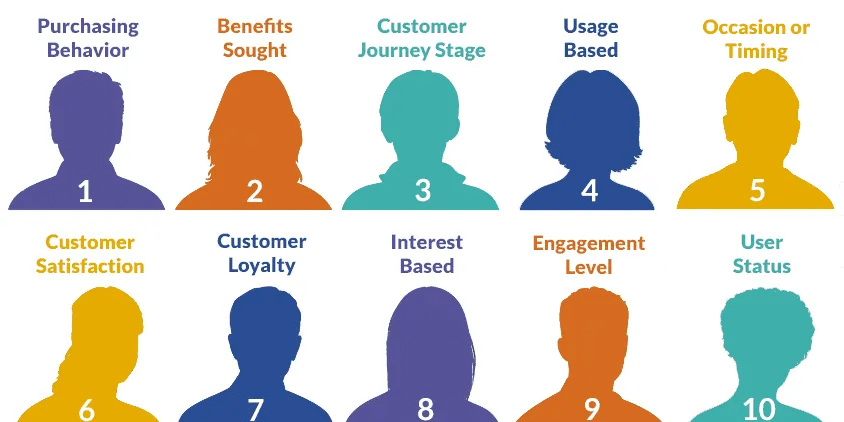
Image Source: Pointillist
Demographic Customer Segmentation
The demographic customer segmentation model groups customers based on their demographic characteristics, such as age, gender, income, education, and occupation. As a common segmentation model, it offers a straightforward way to identify and understand different customer groups.
Factors used in the demographic segmentation model include:
- Age
- Gender
- Income
- Education
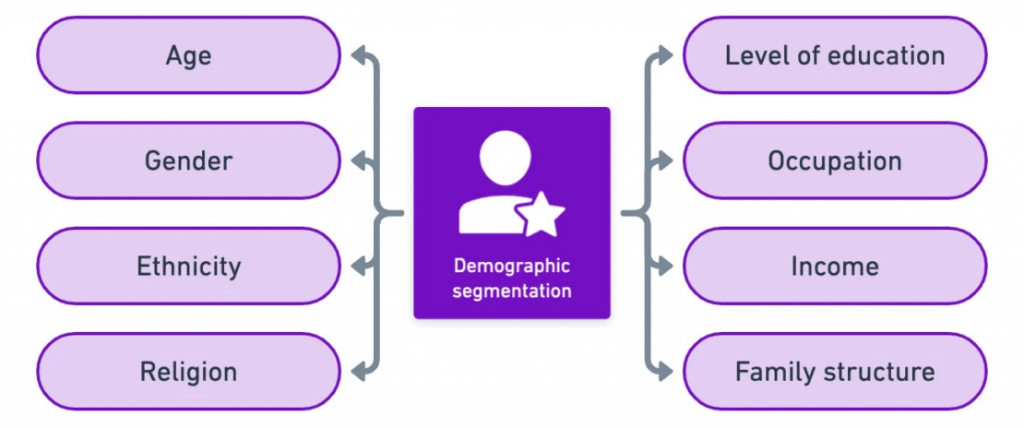
Image Source: Yieldify
Firmographic Customer Segmentation
Firmographic customer segmentation is a widely used model in B2B marketing that categorizes customers based on their business characteristics, such as industry, company size, location, and revenue.
This model helps businesses identify and target customers with tailored marketing efforts, catering to their specific business needs and requirements. Additionally, it enables companies to pinpoint prospects that align with their Ideal Customer Profiles (ICPs), increasing the likelihood of successful sales and partnerships.
Common factors considered in firmographic segmentation include:
- Industry
- Company size (e.g., number of employees, market share)
- Location (e.g., regional, national, or global presence)
- Revenue
- Growth rate
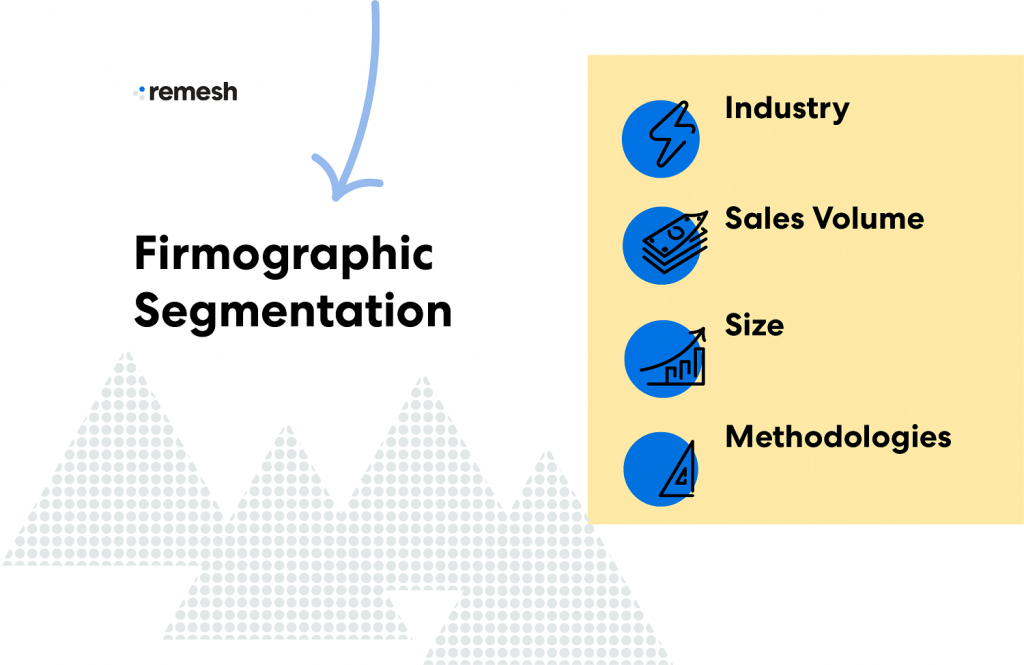
Image Source: Remesh
Psychographic Customer Segmentation
The psychographic customer segmentation model delves deeper into customer profiles by categorizing them based on their personality traits, values, interests, and lifestyles.
By adopting this model, businesses can gain a deeper understanding of the motivations and behaviors that drive different customer groups. This segmentation model is particularly valuable for direct-to-consumer (D2C) businesses, as it enables them to tailor their marketing strategies and product offerings to better resonate with their target audience.
Key factors considered in psychographic segmentation include:
- Personality traits (e.g., introverted or extroverted, risk-averse or risk-seeking)
- Values (e.g., environmental consciousness, family orientation)
- Interests and hobbies
- Lifestyles (e.g., health-conscious, luxury-oriented)
- Attitudes and opinions
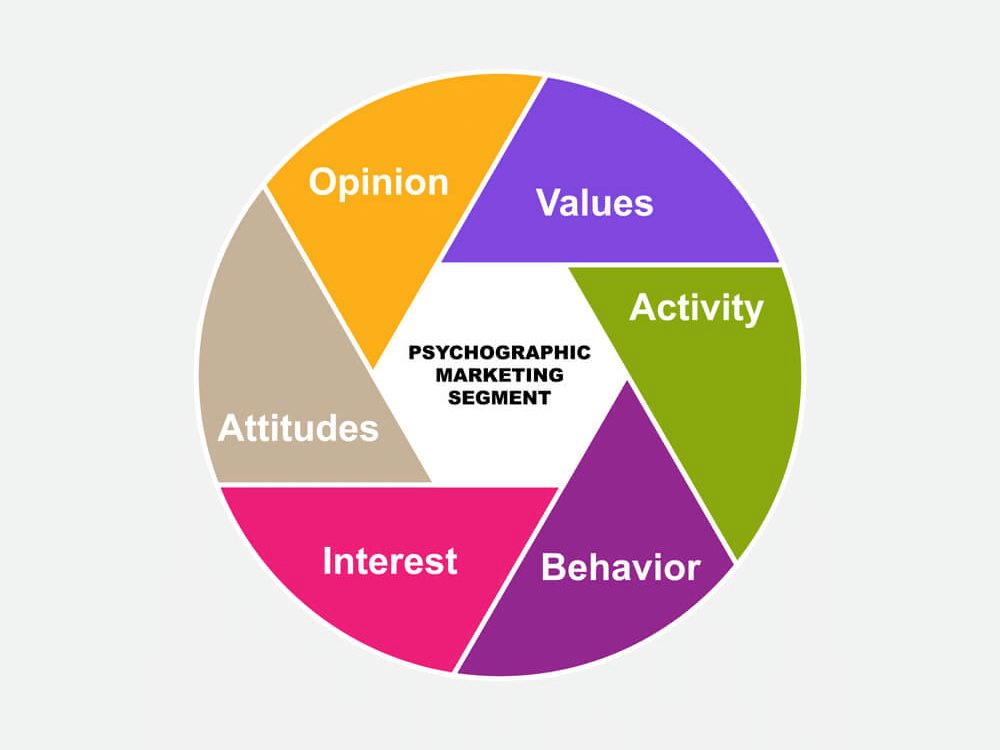
Image Source: Formplus
Geographic Customer Segmentation
The geographic customer segmentation model categorizes customers according to their geographic location, such as country, region, city, or neighborhood. This approach is widely utilized by businesses to recognize and comprehend customer groups based on location-specific preferences and behaviors.
Various factors can be incorporated into the geographic segmentation model, including:
- Country
- Region
- City

Image Source: Yieldify
Technographic Customer Segmentation
The technographic customer segmentation model groups customers based on their technology usage and preferences, such as their preferred devices, social media platforms, and online behaviors. For B2B businesses, this model is particularly used to identify the tools and applications used by their potential customers, especially on their websites.
This model is commonly used by businesses to identify and understand customer groups based on their digital habits and behaviors.
Factors that can be used in the technographic segmentation model:
- Devices (e.g., smartphones, tablets, laptops, desktops)
- Platforms (e.g., operating systems, social media platforms, browsers)
- Usage of technology on the customer’s website (Eg: Google Analytics, WordPress, etc.)
- Privacy Preferences (e.g., data sharing, ad blockers)
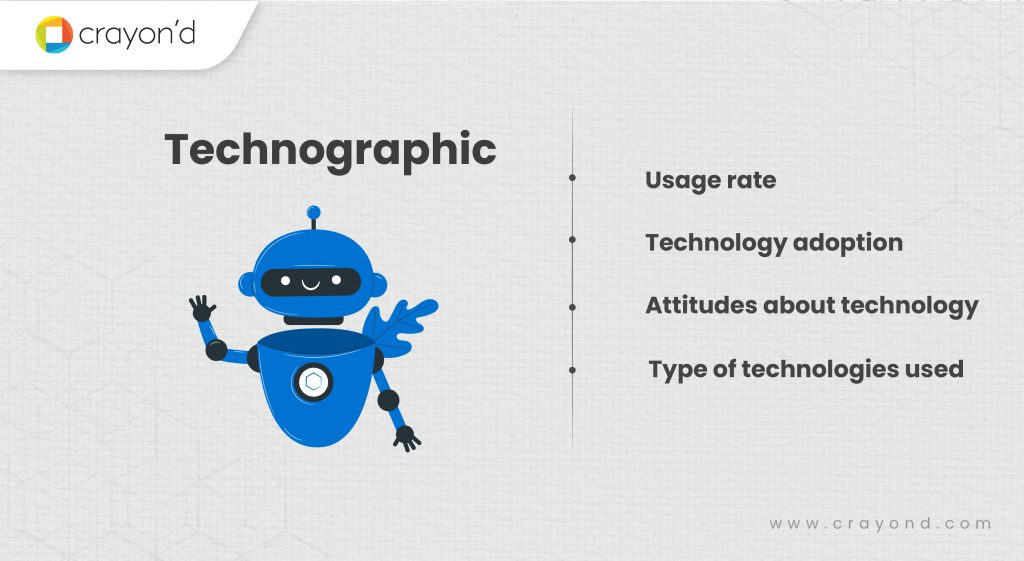
Image Source: Crayon’d
Top 5 Customer Segmentation Tools
1. Salespanel
Salespanel is a marketing enablement platform that helps B2B businesses track entire customer journeys and segment customers based on demographic, firmographic, and behavioral data.
By capturing leads from various marketing channels and tracking them in real-time, Salespanel consolidates all customer data, enabling users to segment website visitors, leads, and customers with ease. Segmented users can be sent to your CRM, qualified with lead scoring, or presented with personalized and targeted content. The tool works seamlessly with other sales and marketing products in your arsenal.
Pricing: A free trial is available for 14 days and paid plans start at $149/month (billed annually).
2. Segment
Segment is a powerful Customer Data Platform (CDP) designed to help businesses collect, manage, and generate actionable insights from customer data. By unifying customer data from various platforms and channels, Segment enables businesses to understand customer journeys and deliver personalized experiences at scale.
With Segment, businesses can gain a comprehensive view of each customer, using different segmentation models to tailor marketing strategies and improve customer experiences. The platform’s Profile API further simplifies the process of personalizing customer journeys by facilitating seamless data access and management.
Pricing: Segment offers a free plan with limited capabilities and their paid plans start at $120/ month.
3. BuiltWith
While Builtwith may not be the first platform that comes to mind when considering customer segmentation, it excels as a powerful business intelligence tool for technographic segmentation of websites.
BuiltWith provides businesses with valuable insights into the technology profiles of their prospects and customers. With its extensive and up-to-date database, the platform offers comprehensive information on the applications and services used by customers’ websites, revealing their tech stacks and technology usage patterns.
Using BuiltWith, you can generate leads, segment them using a technographic model, and significantly enhance the effectiveness of your marketing campaigns. For SaaS products that integrate with customer websites, BuiltWith can help generate a list of businesses using complementary or competing products.
Pricing: Builtwith offers some functions for free. However, if you wish to make the most out of it, their paid plans start at $295/month.
4. Hubspot
Hubspot is no stranger to anyone in marketing. As a leading marketing platform, it offers a comprehensive suite of solutions for a business’s marketing, sales, and customer management needs.
So it should not be a surprise to find out that Hubspot offers a capable customer segmentation tool. Hubspot has also highlighted the benefits of customer segmentation when it delivered a 16% improvement in clickthrough rate.
As to be expected, Hubspot offers you tools to segment your contacts based on various profile, firmographic, demographic, and behavioral data. Their segmentation tool is the most effective for businesses that are already using their CRM.
Pricing: Segmentation is available on Hubspot Marketing Hub where prices start at $800/month.
5. Insightly
Insightly is a CRM and a Marketing Automation tool that helps businesses build sales pipelines faster and drive revenue growth. The tool offers advanced list segmentation features that can help businesses personalize customer experience from the first-touch to the very last touchpoint.
Much like Hubspot, Insightly also has CRM and marketing products under its banner. And, there are some similarities in their capabilities. The platform offers a variety of features that enable users to effectively segment their customers, leading to more targeted marketing and sales efforts.
Pricing: Insightly offers a free trial and their paid plans start at $99/month.
Conclusion
Personalization and targeted marketing campaigns can significantly boost the effectiveness of your marketing efforts, yielding 5X more compared to your regular marketing campaigns. Customer segmentation serves as the foundation for achieving this level of success in targeted and personalized marketing.
In this article, we’ve explored five customer segmentation models that can help you tailor your segmentation strategy to your business’s unique needs. Feel free to try any of our suggested customer segmentation tools and find out the power of segmentation to drive better marketing results.
Sell more, understand your customers’ journey for free!
Sales and Marketing teams spend millions of dollars to bring visitors to your website. But do you track your customer’s journey? Do you know who buys and why?
Around 8% of your website traffic will sign up on your lead forms. What happens to the other 92% of your traffic? Can you identify your visiting accounts? Can you engage and retarget your qualified visitors even if they are not identified?


